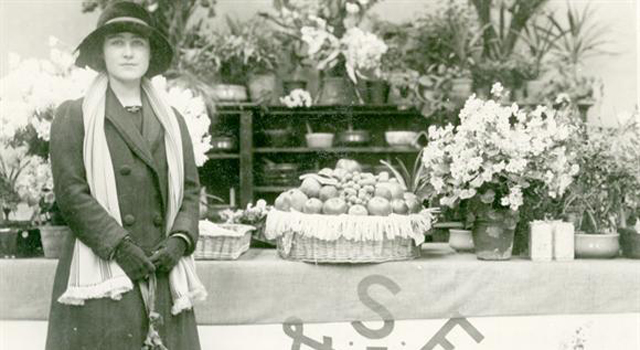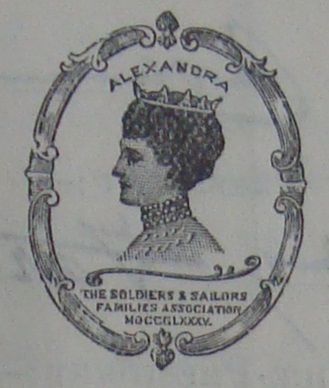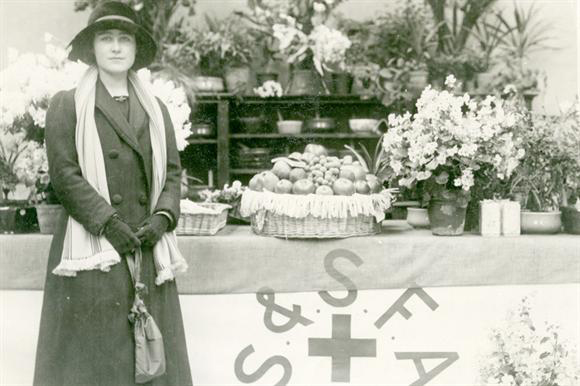Articles

No Comments
By Voices
On 23, Mar 2015 | No Comments | In Cities | By Voices
The Soldiers’ and Sailors’ Families Association, County Dublin Division, 1914: a case study
Paul Huddie, Queen’s University Belfast
One prominent feature of the British home front campaign of the Great War was the boom in wartime charities. So great was the expansion of charitable (or allegedly charitable) endeavours during and after 1914 that the War Charities Act 1916 had to be passed in order to regulate them. However before that great charitable rage took place, at the outbreak of the war, a number of such organisations were already well-established. One such charity was the Soldiers’ and Sailors’ Families’ Association (SSFA).
 The SSFA was dedicated to the charitable relief and support of living servicemen’s families and during the conflict it collected and dispensed millions of pounds in financial relief, as well as millions more in kind. That aid was dispensed to millions of wives, children and related dependents of British and Irish servicemen living in the United Kingdom, India and other overseas stations through networks of local branches which comprised tens of thousands of women (and men) volunteers.
The SSFA was dedicated to the charitable relief and support of living servicemen’s families and during the conflict it collected and dispensed millions of pounds in financial relief, as well as millions more in kind. That aid was dispensed to millions of wives, children and related dependents of British and Irish servicemen living in the United Kingdom, India and other overseas stations through networks of local branches which comprised tens of thousands of women (and men) volunteers.
This aspect of the conflict was vital to the war effort, however it has been substantially under-recognised over the past ninety years. As the Irish Times declared on 15 August 1914 (a sentiment that was echoed across the United Kingdom and the British Empire) by providing for the wives, children and other dependents of the brave men who were about to leave their native land to defend ‘freedom’, people could be confident that the soldier or sailor would be able to fight hard and endure anything. Such provisions were also seen as necessary to induce ‘respectable workers’ to enlist and it was the middle and upper-class women of society who were expected to support those charities and those sections of society.
 The outbreak of the Great War in August 1914 caught most people in Ireland and Great Britain completely off-guard while the British state and its military authorities found themselves and their respective infrastructures completely out of date and nearly unable to meet the challenges, even of mobilisation. Along with the Royal Patriotic Fund (which looked after war widows and orphans) the SSFA, from 1914-16, provided military dependents with Separation Allowances and Allotments of Pay on behalf of the British state. Although the SSFA had the basic infrastructure with which to dispense such funds and additional charitable relief until 1916, even its ability to take on over 250,000 allowance recipients as well as hundreds of thousands of charitable relief cases was limited in August 1914. Substantial recruitment, expansion and reorganisation was required in order for it to successfully adapt to its unprecedented wartime responsibilities.
The outbreak of the Great War in August 1914 caught most people in Ireland and Great Britain completely off-guard while the British state and its military authorities found themselves and their respective infrastructures completely out of date and nearly unable to meet the challenges, even of mobilisation. Along with the Royal Patriotic Fund (which looked after war widows and orphans) the SSFA, from 1914-16, provided military dependents with Separation Allowances and Allotments of Pay on behalf of the British state. Although the SSFA had the basic infrastructure with which to dispense such funds and additional charitable relief until 1916, even its ability to take on over 250,000 allowance recipients as well as hundreds of thousands of charitable relief cases was limited in August 1914. Substantial recruitment, expansion and reorganisation was required in order for it to successfully adapt to its unprecedented wartime responsibilities.
By taking the charity’s County Dublin Division (one of over 1,100 such branches in 1914) as a case study it is hoped that not only will a better understanding be formed of Irish (and indeed British) society’s response to the needs of military dependents during the war, but also of the broader SSFA’s inner workings and the people who composed it and the charity’s response to the war as a whole.



Submit a Comment